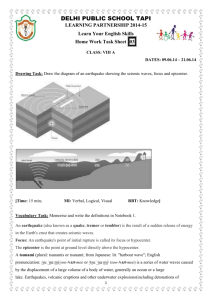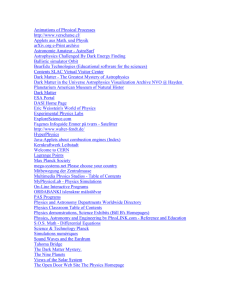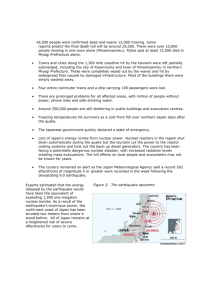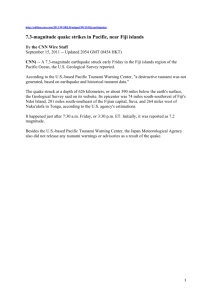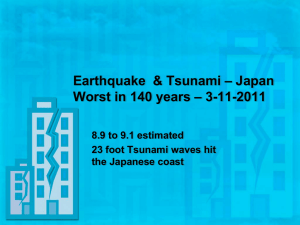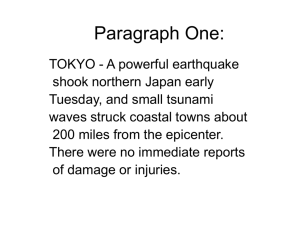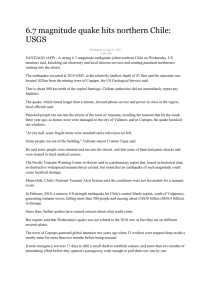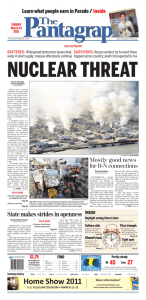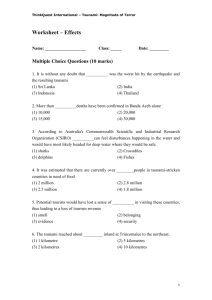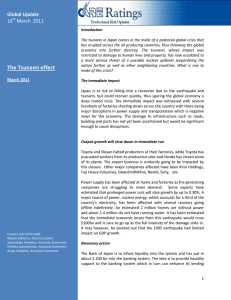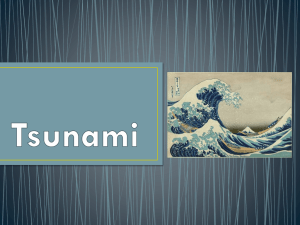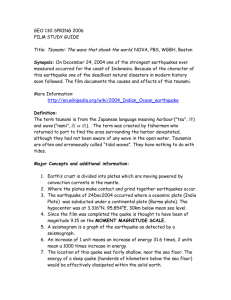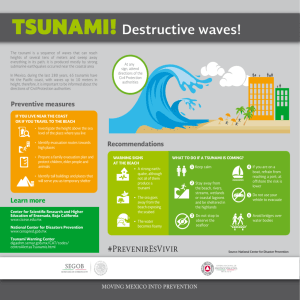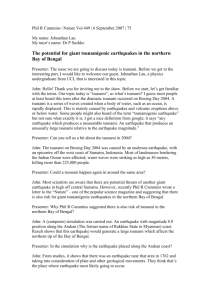Extreme Event Classroom Scenario
advertisement
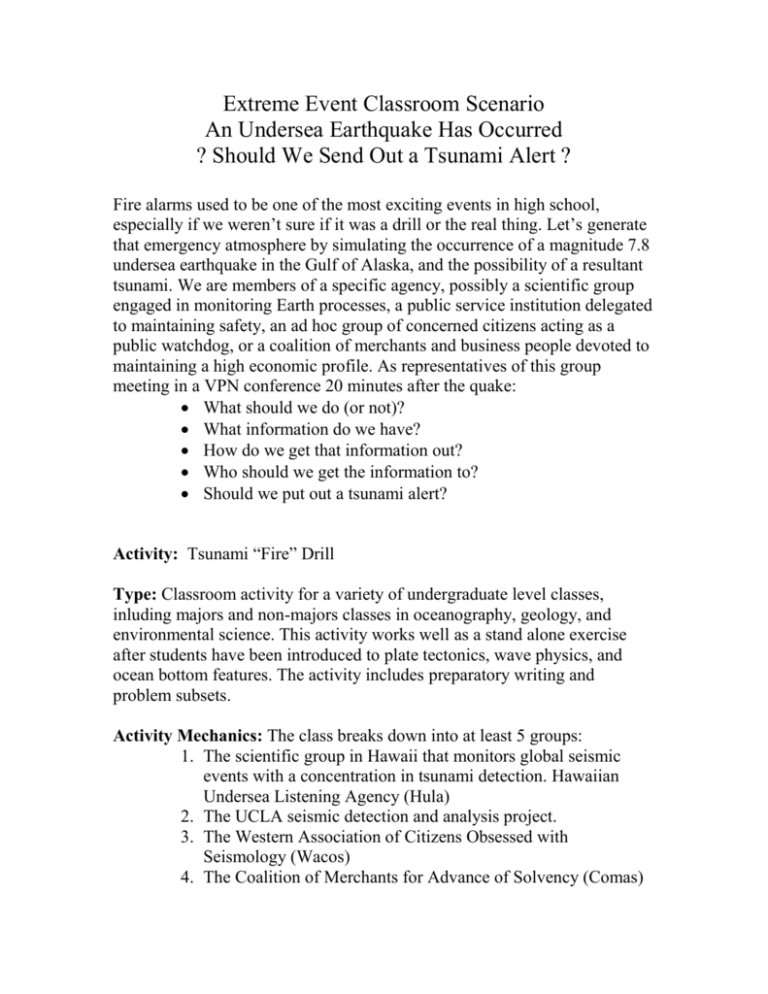
Extreme Event Classroom Scenario An Undersea Earthquake Has Occurred ? Should We Send Out a Tsunami Alert ? Fire alarms used to be one of the most exciting events in high school, especially if we weren’t sure if it was a drill or the real thing. Let’s generate that emergency atmosphere by simulating the occurrence of a magnitude 7.8 undersea earthquake in the Gulf of Alaska, and the possibility of a resultant tsunami. We are members of a specific agency, possibly a scientific group engaged in monitoring Earth processes, a public service institution delegated to maintaining safety, an ad hoc group of concerned citizens acting as a public watchdog, or a coalition of merchants and business people devoted to maintaining a high economic profile. As representatives of this group meeting in a VPN conference 20 minutes after the quake: What should we do (or not)? What information do we have? How do we get that information out? Who should we get the information to? Should we put out a tsunami alert? Activity: Tsunami “Fire” Drill Type: Classroom activity for a variety of undergraduate level classes, inluding majors and non-majors classes in oceanography, geology, and environmental science. This activity works well as a stand alone exercise after students have been introduced to plate tectonics, wave physics, and ocean bottom features. The activity includes preparatory writing and problem subsets. Activity Mechanics: The class breaks down into at least 5 groups: 1. The scientific group in Hawaii that monitors global seismic events with a concentration in tsunami detection. Hawaiian Undersea Listening Agency (Hula) 2. The UCLA seismic detection and analysis project. 3. The Western Association of Citizens Obsessed with Seismology (Wacos) 4. The Coalition of Merchants for Advance of Solvency (Comas) 5. The Federal Emergency Services Training Regiment (Fester) The groups are informed in advance of the earthquake in question. They are given a set amount of time (e.g. several class periods, a couple of weeks) to develop an understanding of the possible causes and effects of this event. Groups are encouraged to assume the mindset of the specific agency they represent, along with their expected level of expertise, access to information, and pre-conceived attitudes. Once the groups have learned what they can about the possibilities of an undersea quake in the Pacific, we convene as a class and break into our respective groups. Then we simulate that the earthquake occurred only 20 minutes ago. We are meeting by VPN (Virtual Private Network) connection. We must decide what to do, if anything. For example: Will a tsunami hit? Where? When? How big? Should we alert the world? Who can we realistically reach in the amount of time we have?
